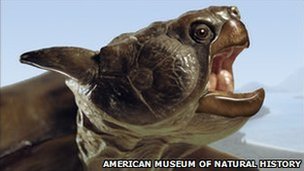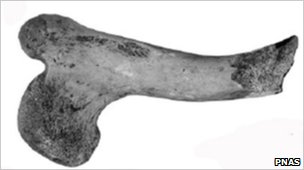Login form
Giant turtle's demise the fault of humans, study says
 Humans helped drive a species of giant turtle to extinction almost 3,000 years ago, according to a study in PNAS.
Humans helped drive a species of giant turtle to extinction almost 3,000 years ago, according to a study in PNAS.
It is one of the first cases that clearly shows that humans played a role in the demise of the giant, extinct animals known as "megafauna".
An Australian research team discovered turtle leg bones - but not shells or skulls - on an
The bones date to just 200 years after humans' arrival, suggesting they were hunted to extinction for their meat.
However, the turtles lived far longer than other megafauna - which included the famed woolly mammoth; while Australian megafauna is thought to have died out almost 50,000 years ago, it appears that these turtles survived for far longer - until the arrival of a people known as the Lapita.
Debate over what caused the megafauna to die out has raged for 150 years, since
The research was published in the Proceedings of the National Academy of Sciences of the United States (PNAS).
'Enormous pressure'
 The research team, led by Professor Matthew Spriggs from the
The research team, led by Professor Matthew Spriggs from the
The turtles, of a never-before-seen species in the genus Meiolania, had a length of two-and-a-half metres and sported fearsome horns on their heads.
But the bones were overwhelmingly from the creatures' legs - their only fleshy and edible part. The team went on to date the bones, finding the last ones occurring in layers of sediment that were laid down about 200 years later than the arrival of the Lapita.
Professor Chris Turney of the
"It's a really lovely example - you have this amazing beast that's been around for tens of millions of years surviving as a relic population on this island. Then these people arrived and they basically disappear in a couple of hundred years," he told BBC News.
"When people turn up they put these populations under enormous pressure - they might not be giving the final, killer blow but they're adding another level of stress. It looks like these fantastic turtles are another example."
Source: bbc.co.uk

